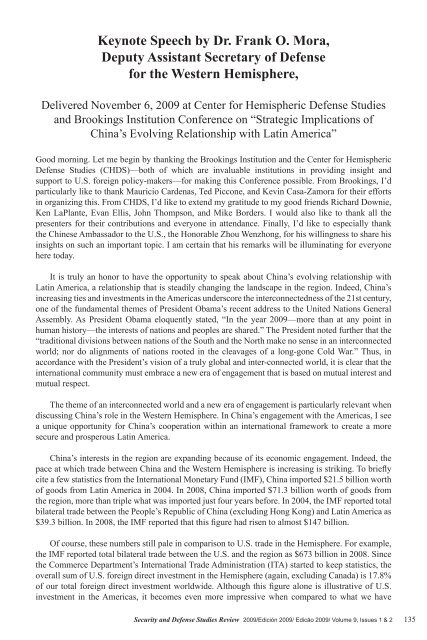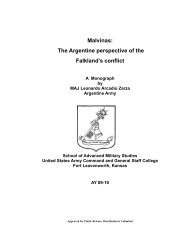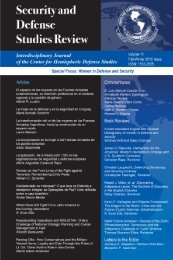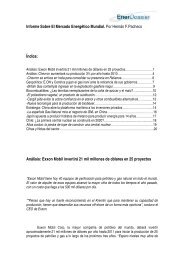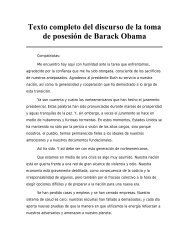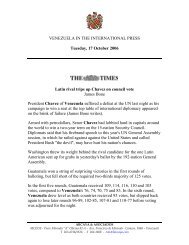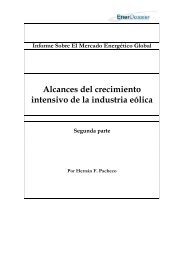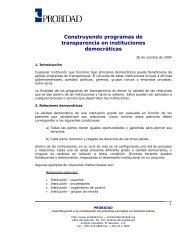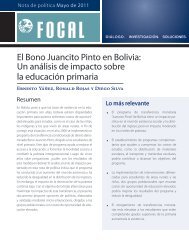Security and Defense Studies Review - Offnews.info
Security and Defense Studies Review - Offnews.info
Security and Defense Studies Review - Offnews.info
Create successful ePaper yourself
Turn your PDF publications into a flip-book with our unique Google optimized e-Paper software.
Keynote Speech by Dr. Frank O. Mora,Deputy Assistant Secretary of <strong>Defense</strong>for the Western Hemisphere,Delivered November 6, 2009 at Center for Hemispheric <strong>Defense</strong> <strong>Studies</strong><strong>and</strong> Brookings Institution Conference on “Strategic Implications ofChina’s Evolving Relationship with Latin America”Good morning. Let me begin by thanking the Brookings Institution <strong>and</strong> the Center for Hemispheric<strong>Defense</strong> <strong>Studies</strong> (CHDS)—both of which are invaluable institutions in providing insight <strong>and</strong>support to U.S. foreign policy-makers—for making this Conference possible. From Brookings, I’dparticularly like to thank Mauricio Cardenas, Ted Piccone, <strong>and</strong> Kevin Casa-Zamora for their effortsin organizing this. From CHDS, I’d like to extend my gratitude to my good friends Richard Downie,Ken LaPlante, Evan Ellis, John Thompson, <strong>and</strong> Mike Borders. I would also like to thank all thepresenters for their contributions <strong>and</strong> everyone in attendance. Finally, I’d like to especially thankthe Chinese Ambassador to the U.S., the Honorable Zhou Wenzhong, for his willingness to share hisinsights on such an important topic. I am certain that his remarks will be illuminating for everyonehere today.It is truly an honor to have the opportunity to speak about China’s evolving relationship withLatin America, a relationship that is steadily changing the l<strong>and</strong>scape in the region. Indeed, China’sincreasing ties <strong>and</strong> investments in the Americas underscore the interconnectedness of the 21st century,one of the fundamental themes of President Obama’s recent address to the United Nations GeneralAssembly. As President Obama eloquently stated, “In the year 2009—more than at any point inhuman history—the interests of nations <strong>and</strong> peoples are shared.” The President noted further that the“traditional divisions between nations of the South <strong>and</strong> the North make no sense in an interconnectedworld; nor do alignments of nations rooted in the cleavages of a long-gone Cold War.” Thus, inaccordance with the President’s vision of a truly global <strong>and</strong> inter-connected world, it is clear that theinternational community must embrace a new era of engagement that is based on mutual interest <strong>and</strong>mutual respect.The theme of an interconnected world <strong>and</strong> a new era of engagement is particularly relevant whendiscussing China’s role in the Western Hemisphere. In China’s engagement with the Americas, I seea unique opportunity for China’s cooperation within an international framework to create a moresecure <strong>and</strong> prosperous Latin America.China’s interests in the region are exp<strong>and</strong>ing because of its economic engagement. Indeed, thepace at which trade between China <strong>and</strong> the Western Hemisphere is increasing is striking. To brieflycite a few statistics from the International Monetary Fund (IMF), China imported $21.5 billion worthof goods from Latin America in 2004. In 2008, China imported $71.3 billion worth of goods fromthe region, more than triple what was imported just four years before. In 2004, the IMF reported totalbilateral trade between the People’s Republic of China (excluding Hong Kong) <strong>and</strong> Latin America as$39.3 billion. In 2008, the IMF reported that this figure had risen to almost $147 billion.Of course, these numbers still pale in comparison to U.S. trade in the Hemisphere. For example,the IMF reported total bilateral trade between the U.S. <strong>and</strong> the region as $673 billion in 2008. Sincethe Commerce Department’s International Trade Administration (ITA) started to keep statistics, theoverall sum of U.S. foreign direct investment in the Hemisphere (again, excluding Canada) is 17.8%of our total foreign direct investment worldwide. Although this figure alone is illustrative of U.S.investment in the Americas, it becomes even more impressive when compared to what we have<strong>Security</strong> <strong>and</strong> <strong>Defense</strong> <strong>Studies</strong> <strong>Review</strong> 2009/Edición 2009/ Edicão 2009/ Volume 9, Issues 1 & 2 135


